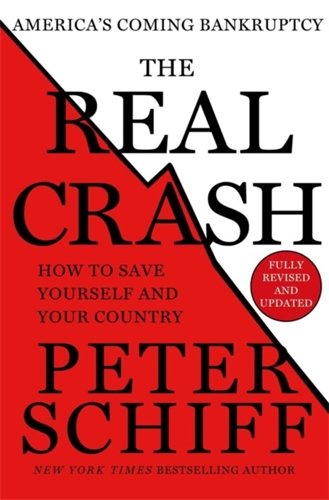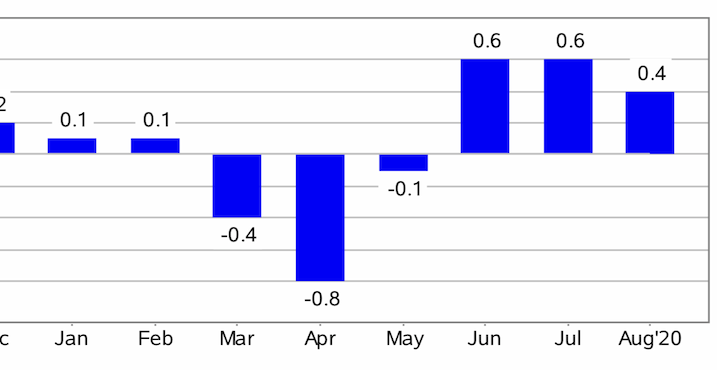posted: October 4, 2020
tl;dr: One of the few who predicted and profited from the bursting of the U.S. housing bubble describes and predicts the end of the biggest bubble yet...
I needed an antidote after reading Stephanie Kelton’s enlightening book on Modern Monetary Theory, The Deficit Myth, so I reached for Peter Schiff’s The Real Crash, Edition 2.0. It was just what my mind needed. You can safely put these two books at opposite ends of the spectrum of views on the economy from “fringe mainstream” economists, with actual U.S. policy falling somewhere in the middle, albeit much closer to Kelton’s views.
Schiff actually has more real-world credibility than does Kelton, who is an economics professor and advisor to government and politicians including Bernie Sanders. Schiff is somewhat famous for predicting the Great Recession caused by the bursting of the housing bubble in 2008. In fact, the most impactful section in The Real Crash is Appendix I, which is a reprint of an email Schiff sent to his clients in 2006 spelling out how the housing bubble would burst and describing an investment vehicle he and his firm created to profit from the collapse. It’s one thing to go on TV in 2006 and make statements that the U.S. housing market was overvalued; it’s a whole other thing to put in the work to figure out how to take advantage of the prediction and then to actually do so. It wasn’t easy to short the housing market; Michael Lewis wrote a fascinating book, The Big Short: Inside the Doomsday Machine, that profiled a few iconoclastic individuals who did so. I, too, felt that housing was in a bubble at the time, but I didn’t put my money where my mouth was. Schiff deserves credit for doing so.
(An aside: Schiff is primarily an investment banker and businessperson, and observes that “economists rarely run successful businesses”. This is a valid point, in my mind: if someone knows so much about how the economy works, why wouldn’t that person put that knowledge to use in the real world? In academia, the gulf between the economics department and the business school is wider than you might imagine. I tend to respect more the people with “skin in the game”.)

The housing bubble, according to Schiff, was merely the prelude to the largest, final bubble, which Schiff calls the “government bubble”. It’s the same bubble I’ve observed, which I called the government-issued debt bubble. Someday this bubble will burst, which is the “real crash” of the title. Schiff describes in fairly precise terms what the crash will look like: inflation; the Fed being unable to raise interest rates to combat inflation, as it did in the late 1970s, because of the enormous amount of debt outstanding; a collapse in the value of the dollar; and the eventual replacement of the dollar with something else as the world’s reserve currency for international transactions (Schiff predicts a return to the gold standard, at least between nations).
The main criticism that can be leveled against Schiff is that he has been predicting this crash for years and it hasn’t happened yet. The Real Crash was first published in 2012 and the 2.0 edition I read was published in late 2013. Nothing has fundamentally changed in Schiff’s views. If you listen to him today (he is also a podcaster), he uses current events to illustrate his long-held beliefs on the economy and government, which are detailed in The Real Crash. He thus can be accused of being a “permabear”. However, that doesn’t mean he won’t ultimately be correct. Getting the timing right on major financial bubbles popping is exceedingly difficult, since pervasive irrationality is a key ingredient of bubbles. The dotcom bubble lasted for two years longer than I expected, and the government-issued debt bubble is the largest bubble yet.
Schiff is a fervent free market capitalist and libertarian. He does a great job in The Real Crash of demonstrating that our current economic system is anything but free market capitalism. It’s regulatory capitalism, with a large dollop of crony capitalism mixed in. Moral hazards abound, and we keep creating more of them, by bailing out more failed companies, industries, and governments. He also shows just how far our current monetary system has strayed from the explicit language of the Constitution, when a dollar literally was a unit of measurement for gold (the founding fathers had been burned by the Continental, a paper currency issued by the Continental Congress to fund the Revolutionary War, that became worthless).
Schiff’s solution is a return to the U.S.’s free market capitalism roots, which he spells out in detail in The Real Crash for many of the major sectors of our economy, including healthcare. If you want to know what the U.S. economy would look like if we actually practiced free market capitalism, The Real Crash shows the way

CPI monthly change, from the BLS: Are pandemics deflationary (March-May) or inflationary (June-August)? Time will tell...
So who is right, Peter Schiff or Stephanie Kelton? We may be about to find out, thanks to the major recession (depression?) induced by the COVID-19 pandemic. As events unfold, I think that Schiff has been the more accurate prognosticator. For example, why should a pandemic-induced recession cause U.S. stock markets to post new highs, when business conditions, sales, and profits are clearly worse than they were before the pandemic? Schiff’s response is that there has been asset price inflation because of the Fed’s money printing, which has devalued the dollar. Priced in gold (or “real money” as Schiff calls it), the stock market has indeed gone down because of the pandemic, which makes much more sense to me.
The key is inflation. The Fed has already done massive inflation of the money supply, and there are demands, from Kelton and others, to do much more. If that inflation shows up as price increases for consumers (CPI increased at a >6% annual pace over the past three months), we could very well enter the crash scenario that Schiff describes. For those who think Schiff may be right, at least partially, The Real Crash provides guidance for protecting one’s savings and potentially profiting from the collapse of the largest bubble yet.